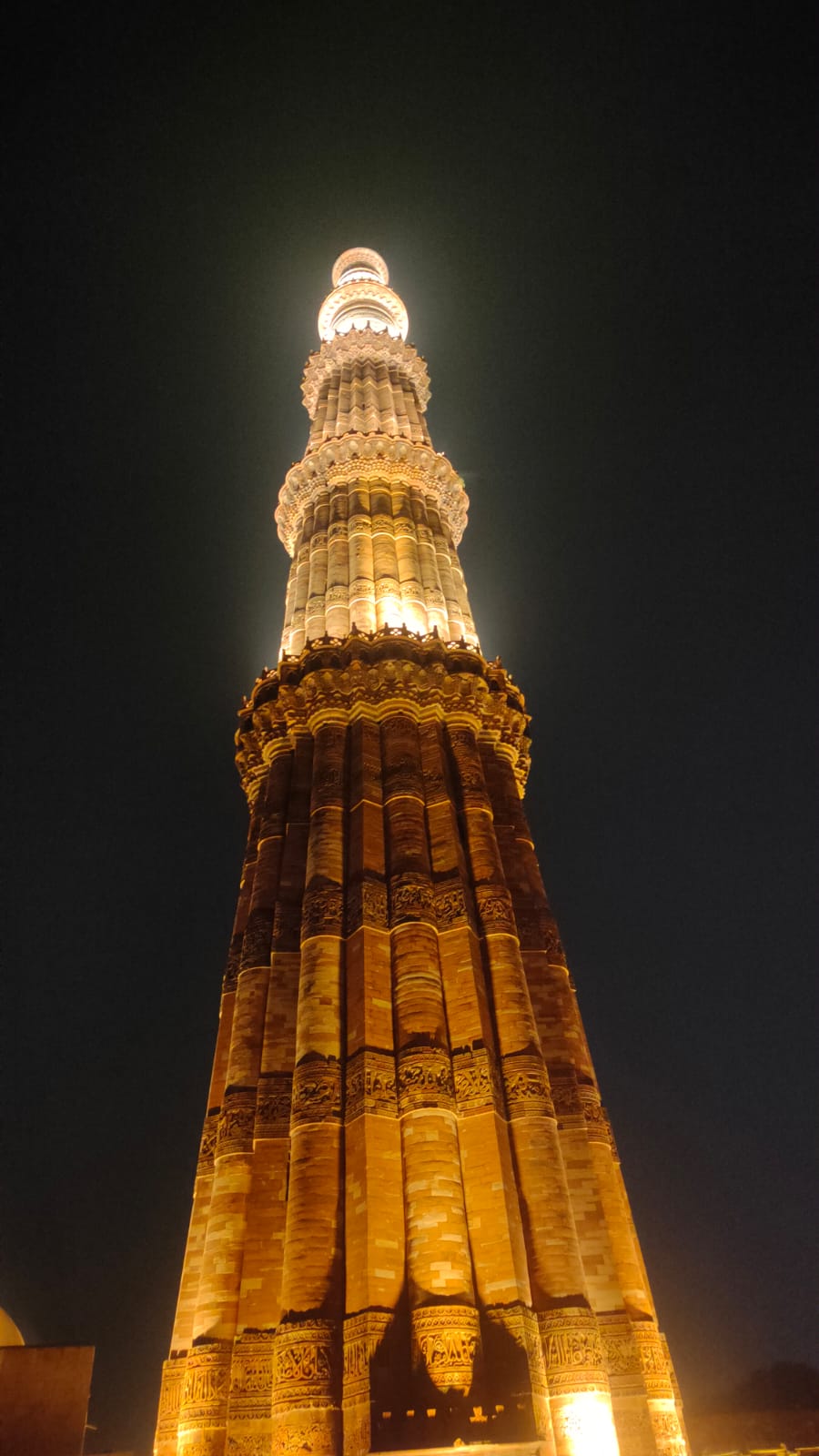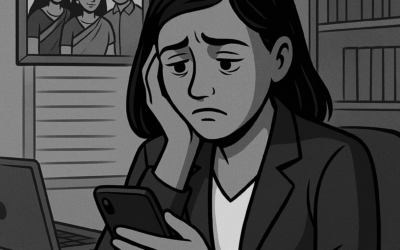One brisk evening during my fellowship mid-point meet/training in Delhi , we visited the majestic Qutub Minar, a UNESCO World Heritage Site. As I stepped into the vast courtyard, the towering monument, stole my breath away. I marveled at its engineering, feeling dwarfed by its grandeur. We clicked photos, engraving memories. Little did I know, this awe was merely the spark that ignited ethical dilemma.
Back in our rooms, conversation erupted, not about the day’s training or lessons, but about the Qutb Minar. My friend asked, “So, how was it?”
“A visual feast, I couldn’t take my eyes away. The engineering prowess, just astounding!” Then, his next question, sent ripples of unease across the table: “Did you know it was built by slaves?”
History reveals that the construction of the Qutub Minar began in the late 12th century under Qutub-ud-din Aibak and Iltutmish, belonged to the Delhi Sultanate’s “Slave Dynasty” (1206-1290), a period when the practice of slavery was unfortunately widespread. This dynasty gets its name because some of its rulers, including Aibak, started their lives as slaves who rose through the ranks of the military. I don’t know if it was really built be slaves, but what if it was?
Reflecting on who the slaves might have been, I could only consider two possibilities. Can they be forced labourers? Could they be prisoners? I am not sure, but many scholars predict they were likely a mix of captured individuals, forced into servitude due to debt or other circumstances, and possibly even skilled artisans brought in to contribute to the project.
I wasn’t thinking about this when I was at the premises of Qutb Minar, but somehow I missed the nodal detail that should have been implicit. Questions arose:
Am I meant to enjoy the beauty at the cost of someone’s misery?
However, definitive answers remained elusive.
Thinking of the contemporary world, the facts are even more disgusting and it is an irony. It looks like the sheer amount of slavery right at this moment is higher than what it was when slavery was common, and to my surprise, most of them are children. Click here to access more data.
The Beginning
I was contemplating if it was ethical to visit such monuments that were build by the injustice?

I did know that the historical sites often represent a complex amalgamation of achievements and injustices but no matter how hard I try, I can’t comprehend the pain and suffering which the builders had to undergo. However, I developed the belief that acknowledging the suffering involved in their construction was crucial, and I also agreed that it shouldn’t negate the cultural and architectural value they hold.
The awe-inspiring beauty of Qutb Minar left me contemplating the complex legacies of history, where architectural marvels coexist with the ghosts of suffering
The Dilemma In Historic Monuments
My encounter with Qutub Minar sparked some critical inquiries. Do we have to appreciate the architectural marvel at the cost of their suffering? If we don’t acknowledge that, wouldn’t the pain and suffering which that had to undergo be in vain?
But, what does recognizing and acknowledging the facts bring? What’s going to change? Yes, I agree. It doesn’t and it won’t change the past but it can change the way we think and the way in which we act. At least to some extent, we will start to correlate the way we act and will try our best to not do the same thing as the slave king.
Returning to the question, is visiting a place built by tormenting so many people ethical?
If I say yes to this question, it implies that I’m an hypocrite.
If I say no to this question, then what does it imply? Could it be salvation?
Why so? A deep contemplation has always led me to that answer of salvation and the realization that we are born at someone’s pain and live at the cost of someone’s misery.
Life And Death
As I grappled with the ethical implications of historical monuments, the contemplation of past suffering naturally evolved into a broader inquiry of questioning life and existence. These contemplation gave me the potential answer as death.
But further delving into it showed that death can’t be the solution for everything. I also understood that people who don’t want to face reality make that decision. If the reality is so cruel and morbid, is it bad to take that ultimate decision? Logically, it might seem better to choose death over enduring these morbid realities. Yet, if everyone adopts this perspective, who will drive change?
While contemplating only the negative aspects might be overwhelming and might lead one to consider death as the answer, we must not forget that It’s a complex tapestry woven with both positive and negative experiences, which includes happiness and sadness, love and hate, good and bad, light and dark, etc.
We have choice; we can either face reality and try our best to change something or just be part of the system and do the work without much contemplation.
Does this mean that ethical dilemmas can arises when we contemplate and question? I would say Yes. But, If we aren’t contemplating, then wouldn’t we be part of the same vicious cycle again? Maybe. Transitioning from the considerations of life and death, let’s ground ourselves in a real-world dilemma. I now want to talk about the dilemma in mining in Kalahandi, Odisha.
The Dilemma In Mining
This case vividly illustrates the ongoing struggle to find a balance between development and ethical responsibility. Over here, the tribal areas of Kalahandi in which I’m working, is rich in Bauxite ores, which the government has planned to excavate. I don’t know if mining would happen, but there was a mass gatherings during the public hearing and everyone shouting “Go back! Go back!”

If it starts, severe negative consequences would occur, such as displacing the people who had been living there for eons, stripping away their livelihood, their home, their peace, accompanied by the destruction of the environment, not just pollution but also severely affecting the ecology. I agree that authorities would give them resettlement homes and might provide job opportunities in the mines, but…
- Would that job be sustainable?
- Will they not lose their social connection?
- Wouldn’t this displacement traumatize them?
I do not want the mining to take place here for the above mentioned reasons. However, If we say that I am against mining or do not support mining, then shouldn’t I be the same person who doesn’t use the products made from the mined ores?
Am I a hypocrite? Thinking deeply, YES




0 Comments